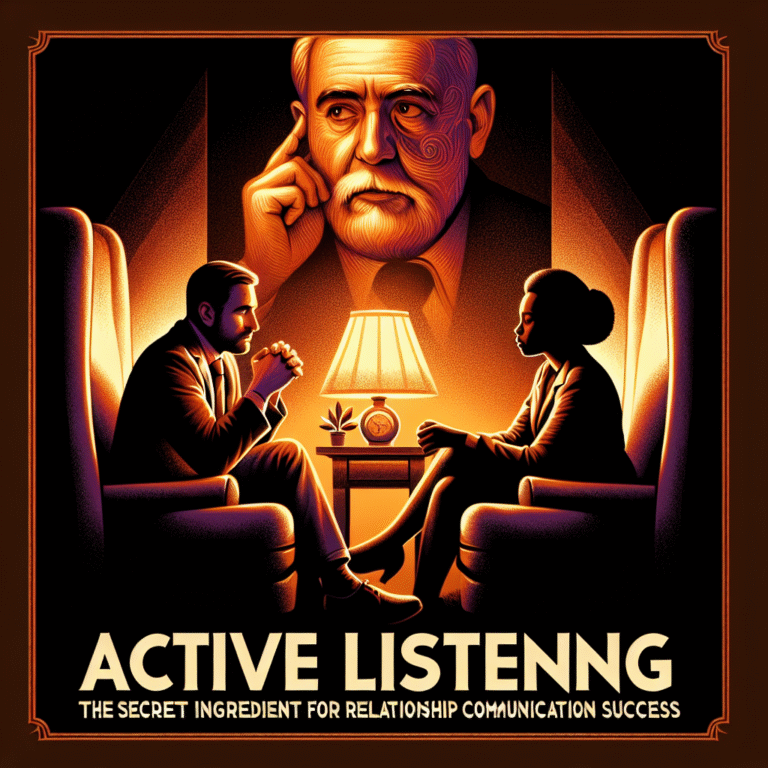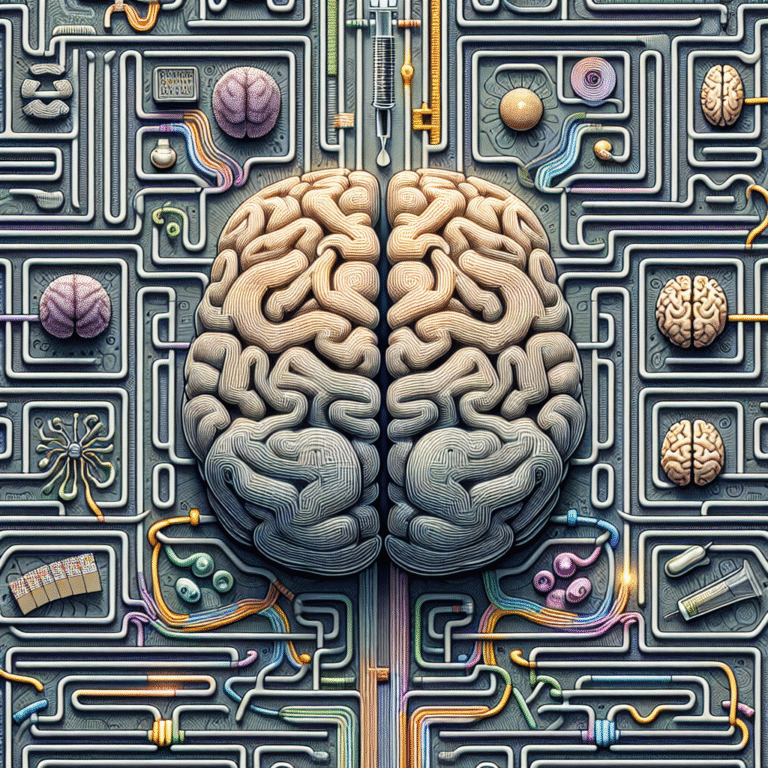
Step by Step: How Behavioral Techniques Can Help Alleviate Depressive Symptoms
Introduction
Depression is a pervasive issue that affects millions of individuals around the globe. It’s more than just a feeling of sadness; it can seep into every aspect of one’s life, impacting relationships, work, and overall well-being. Fortunately, there are effective strategies to tackle these feelings, and in this article, we will explore Step by Step: How Behavioral Techniques Can Help Alleviate Depressive Symptoms.
With a deeper understanding and the right tools, anyone can begin taking actionable steps toward managing their symptoms and leading a more fulfilling life.
Understanding Depression
Before diving into the behavioral techniques, it’s essential to grasp what depression entails. Depression is characterized by a persistent feeling of sadness, loss of interest, and a range of emotional and physical challenges. Recognizing these signs is the first step.
The Symptoms of Depression
- Emotional Symptoms: Sadness, hopelessness, irritability, and anxiety.
- Cognitive Symptoms: Difficulties in concentrating, making decisions, or remembering details.
- Physical Symptoms: Changes in appetite, sleep disturbances, and chronic fatigue.
Why Behavioral Techniques?
Behavioral techniques serve as the backbone of many therapeutic approaches for depression. They focus on changing unhelpful behaviors and increasing engagement in positive activities. Research indicates that modifying behavior can have a significant impact on emotional well-being.
The Science Behind Behavior Modification
At its core, behavioral therapy operates on the principle of conditioning. Techniques such as reinforcement, exposure therapy, and behavior modification aim to unlearn negative behaviors and replace them with positive ones—essentially rewiring how individuals respond to life’s stressors.
Step 1: Recognizing Triggers
Identifying personal triggers for depressive symptoms is a crucial first step. These can include stressful life events, negative self-talk, or even specific situations. Awareness is key.
Case Study: Emily’s Journey
Emily was a 28-year-old graphic designer who reported experiencing frequent depressive episodes. Through journaling, she discovered that deadlines were significant triggers. By recognizing this, she could prepare mentally and emotionally.
Relevance: Identifying triggers allowed Emily to anticipate and manage her symptoms proactively.
Step 2: Behavioral Activation
Behavioral activation focuses on increasing engagement in enjoyable activities. This can counteract the inertia often associated with depression.
How It Works
- Activity Charting: Keeping a log of daily activities can help identify joyless routines.
- Setting Small Goals: Starting with manageable tasks can lead to a sense of achievement.
Case Study: Jake’s Progress
Jake struggled with depression after losing his job. Initially, he isolated himself. A therapist helped him create a schedule that included physical activity and social interactions. Over time, he noted improved mood and outlook.
Relevance: Jake’s case illustrates that re-engaging in life can create a positive feedback loop, improving mental health.
Step 3: Cognitive Restructuring
Cognitive restructuring involves identifying and challenging negative thoughts. This leads to a more balanced perspective.
Practical Steps
- Identify Negative Thoughts: Write down negative thoughts as they occur.
- Challenge Them: Ask yourself: Is this thought factual? What would I tell a friend in this situation?
Case Study: Sarah’s Insight
Sarah had persistent negative thoughts about her self-worth. By working with her therapist, she learned to challenge these thoughts, ultimately leading to improved self-esteem.
Relevance: This practice not only reduced her depressive symptoms but also improved her overall self-image.
Step 4: Social Support
Building a robust support system can mitigate feelings of isolation. Engaging with friends, family, or support groups can provide much-needed companionship.
Steps to Foster Connection
- Reach Out: Regularly connect with loved ones, even through simple messages or calls.
- Join Groups: Engage in community or interest-based activities that bring people together.
Case Study: Oliver’s Transformation
After feeling isolated during lockdowns, Oliver joined an online writing group. Sharing experiences with others who faced similar challenges helped him feel understood and less alone.
Relevance: The support from peers fostered Oliver’s sense of belonging, alleviating depressive symptoms.
Step 5: Mindfulness and Relaxation Techniques
Incorporating mindfulness practices can enhance awareness and reduce stress.
Techniques to Explore
- Meditation: A few minutes daily can help center your thoughts.
- Deep Breathing: Taking deep breaths can reduce anxiety, calming the mind.
Case Study: Mia’s Mindfulness
Mia, a college student, found herself overwhelmed by academic pressures. She started practicing mindful breathing exercises, which helped her manage her anxiety more effectively.
Relevance: Mia’s approach exemplifies how mindfulness can serve as a powerful tool in maintaining emotional balance.
Step 6: Professional Help
Sometimes, self-help techniques may not suffice. Seeking professional help should be a step considered if symptoms persist.
When to Seek Help
- Prolonged feelings of sadness.
- Difficulty functioning in daily life.
- Thoughts of self-harm or suicide.
Case Study: Tom’s Therapy Experience
Tom’s initial reluctance to seek help was met with positive results. Through therapy and medication, he was able to manage his depression effectively.
Relevance: Tom’s story underscores that reaching out for help can be a critical step toward recovery.
Conclusion
In summary, Step by Step: How Behavioral Techniques Can Help Alleviate Depressive Symptoms serves as a guide to understanding and managing depression. By recognizing triggers, engaging in activities, challenging negative thoughts, seeking social supports, practicing mindfulness, and enlisting professional help, individuals can begin their journey towards healing and emotional wellness.
Remember, taking one step at a time is essential. You possess the strength to implement these techniques and reclaim your joy.
FAQs Section
1. What are the most common behavioral techniques used for depression?
Common techniques include behavioral activation, cognitive restructuring, and mindfulness practices, which have shown to be effective in managing symptoms.
2. How long does it take for behavioral techniques to work?
The duration can vary widely, but many people may start noticing small changes within a few weeks of consistent practice.
3. Can I practice these techniques on my own?
Yes, many behavioral techniques can be practiced independently, though working with a professional can often provide additional support and guidance.
4. Are these techniques safe for everyone?
In general, these techniques are safe, but it’s always a good idea to consult a healthcare provider before starting any new treatment plan, especially for those with severe symptoms.
5. How do I know if I need professional help?
If depressive symptoms persist despite self-help efforts or if you experience thoughts of self-harm or suicide, seeking help from a mental health professional is crucial.
This comprehensive look at Step by Step: How Behavioral Techniques Can Help Alleviate Depressive Symptoms will not only resonate with readers but also provide actionable insights that can transform their journey towards mental wellness.

















